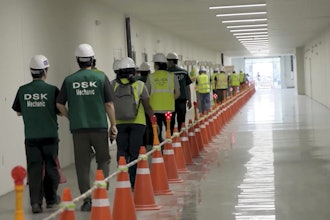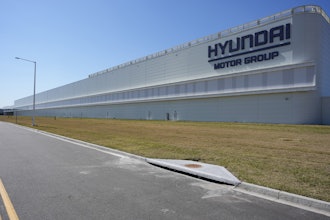The gig economy is on the rise. More and more workers are choosing to take on short-term contracts or work as a freelancer instead of a traditional full-time job. While this idea is nothing new, technology has certainly made looking this shift easier with websites and applications that provide ride-sharing, food delivery, home sharing and more.
We spoke with Pete Butler, president, CEO and founder of MS Companies, about how manufacturers could benefit from utilizing the gig economy. MS Companies provides pre-trained, pre-screened employees to companies via a cloud-based solution.
IMPO: Can you comment on the overall rise on contractor labor in the past 5-10 years? How about specifically in manufacturing?
Butler: By 2020, it’s estimated that 40 percent of the U.S. workforce will be independent contractors, according to Intuit.
The gig economy is a labor market characterized by the prevalence of short-term contract or freelance work as opposed to permanent jobs. The American workforce has already embraced the gig economy, with the Freelancers Union and Elance-oDesk reporting that 53 million U.S. workers are currently freelancing.
In recent years, the gig economy has taken off in the consumer space with ride-sharing, home-sharing and even food delivery services. That growth is most often attributed to the high cost of providing healthcare and other benefits to full-time employees, constant fluctuation in the demands for products, increasing overhead costs, and automation and internet accessibility.
Manufacturers are no stranger to these issues, making them a clear candidate for leveraging gig economy principles to effectively and efficiently fill workforce gaps, especially as The Manufacturing Institute and Deloitte predicts that nearly 3.5 million manufacturing jobs will need to be filled over the next decade.
Each day, MS Companies places between 3,500-5,000 workers in the field with a talent pool of nearly 300,000 to pull from.
IMPO: What are some ways a manufacturer could benefit by utilizing an on-demand workforce?
Butler: Manufacturers can leverage the gig economy to supplement their critical workforce needs. By embracing these millions of freelance workers, manufacturers have access to a skilled workforce ready to fill open positions and shifts on demand.
Traditional talent pools and hiring methods no longer yield the right type of workers with the technology, math and problem-solving skills manufacturers need to operate modern-day plants. With the gig economy, a pre-screened database of hundreds of thousands of experienced workers makes it easier for companies to find the exact type of worker they need, exactly when they are needed.
Employing an on-demand workforce offers many benefits to manufacturing companies, including:
- For full-time job vacancies that are challenging to fill, manufacturers can use the gig economy to “test drive” freelance workers who may be good fits for full-time jobs. By seeing their skills on the job, their work can be more accurately evaluated than during a traditional hiring process.
- Many manufacturers experience some type of seasonality in their production. A flexible, trained and scalable workforce allows manufacturers to reduce costs and ensure that staffing levels are optimized for seasonal production demands.
- By examining performance metrics of their existing workforce, manufacturers can learn which employee factors are making the most impact on productivity. This type of data-driven decision making helps target and hire freelance workers who possess those same traits and skills. Companies that provide and screen large talent pools of freelance workers for manufacturers can use predictive analytics to identify the candidates most likely to excel at the unique demands of each manufacturing plant. Reviewing key performance metrics can also determine the correct quantity of freelance workers needed to reach production goals.
In addition, there is a considerable advantage to manufacturers who are often in need of workers to fulfill tasks immediately, such as access to:
- Skilled workers who are available immediately without a lengthy hiring search;
- Full-time employees who can continue to focus on their jobs, while temporary workers can assist with special projects or short-term demands; and
- Highly skilled workers who are utilized temporarily, without adding a full-time salary to payroll costs.
IMPO: What are some things manufactures should be cautious about before utilizing on-demand labor?
Butler: With every rapidly growing trend often comes growing pains. While we believe in the true power of the gig economy and its benefits to both employees and manufacturers, there are potential issues associated with this new form of employment.
Most employers have failed to expand their thought processes or policies to include temporary staff employed on an ad hoc basis. There is currently no standard definition of what a gig economy worker is, but the term is generally used as shorthand for temporary labor such as freelancers and contractors or agency staff. Gig economy workers tend to fall into two very polarized groups: low-skilled and top-end workers. Therefore, when leveraging the gig economy, it is extremely important to be able to identify the right workers for the job and make data-driven hires.
No matter which group a gig worker falls into, the most common cautionary topic is employment rights of workers. As the gig economy continues to grow, it will be imperative that businesses and lawmakers examine regulations and identify best practices for leveraging this type of workforce.
IMPO: With the estimated 2 million advanced manufacturing jobs expected to go unfilled over the next 10 years, how can an on-demand workforce help manufacturers fill this need?
Butler: As you mention, an estimated 2 million manufacturing jobs will be unfilled by 2025 due to the skills gap. According to a recent study by The Manufacturing Institute and Deloitte, this will result in lost productivity and earnings. There’s a shortage of qualified job applicants in the space, especially for jobs that require more technical skills.
Workforce shortage issues have a considerable impact on a company if manufacturers can’t supplement their critical workforce needs. A CareerBuilder study found that:
- Companies experience an average loss of $14,000 per open position that remains unfilled for three months or longer
- One in six companies lose an average of $25,000 per open position that remains unfilled during that same period
As technology and consumer demand evolves, the widespread skills gap and workforce shortage issues plaguing the industry will only continue to compound if manufacturers don’t identify better talent pools to fill these skilled positions.
By adopting the principles of the gig economy and hiring qualified workers on demand to meet immediate workforce needs, manufacturers can minimize their strain on existing employee resources and maximize productivity and earnings. Today’s worker is primed to deliver exceptional value and service to manufacturers in need of immediate labor through the power of the gig economy.
In addition, by looking beyond the traditional talent pools that are no longer yielding enough workers with the right skills, manufacturers can leverage the gig economy to find employees with the math, technology and problem-solving skills required for the most in-demand jobs.
Manufacturers that capitalize on the power of the gig economy will be well positioned to improve productivity, better meet customer demand and increase earnings. In today’s increasingly competitive workforce landscape, the gig economy provides manufacturers with a scalable solution to combat the workforce shortage problem and grow their businesses.
IMPO: What are those in the on-demand workforce looking for in the companies they work for?
Butler: We’re seeing more highly skilled workers that are seeking project work as opposed to a more traditional means of employment. They want the ability to take on the jobs they want, when they want. This includes skilled workers, such as automation programmers and engineers, who can come in and help a company on a short-term basis.
Some of our gig workers use MS Companies as a gateway to a more permanent position. For full-time job vacancies that are challenging to fill, manufacturers can use the gig economy to “test drive” freelance workers who may be good fits for particular full-time jobs. By seeing their skills on the job, their work can be more accurately evaluated than during a traditional hiring process.
It’s also imperative that manufacturers communicate with their employees in the manner with which they want to be communicated. In today’s world, mobile connectivity can track employee performance and best engage freelance workers. To most effectively attract, retain and measure the performance of freelance workers, manufacturers should strongly consider using mobile technology. Workers in the gig economy are best engaged through via mobile, and it offers an immediate way to communicate with them. Mobile apps can be designed to include a mobile training component that enables freelance employees to arrive on the first day of their job with a solid understanding of the scope of the tasks as well as important job safety knowledge. Mobile technology can also provide employers with real-time analytics, such as tenure, attendance and performance reviews.























